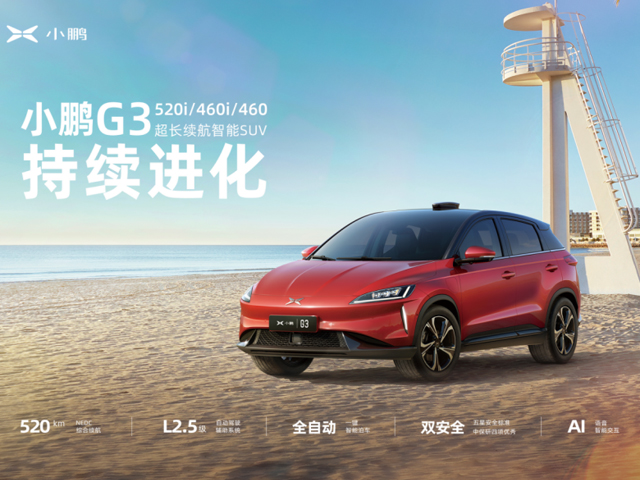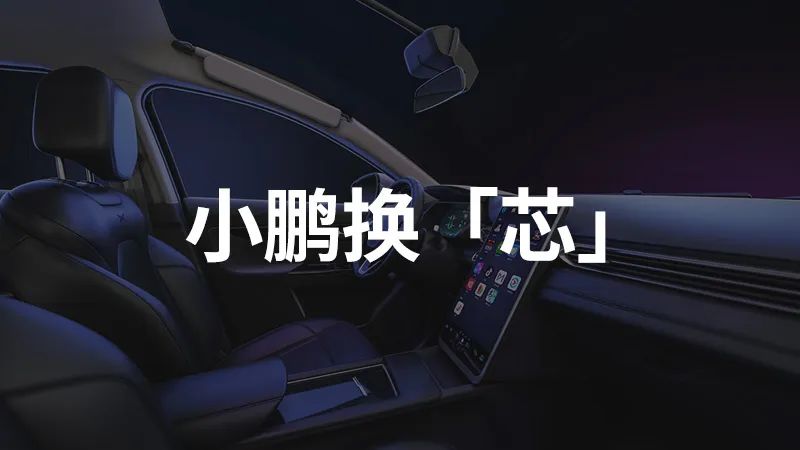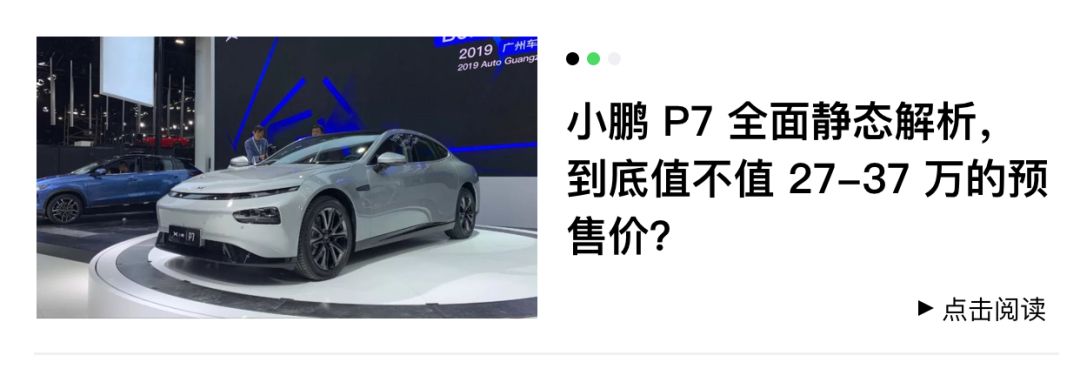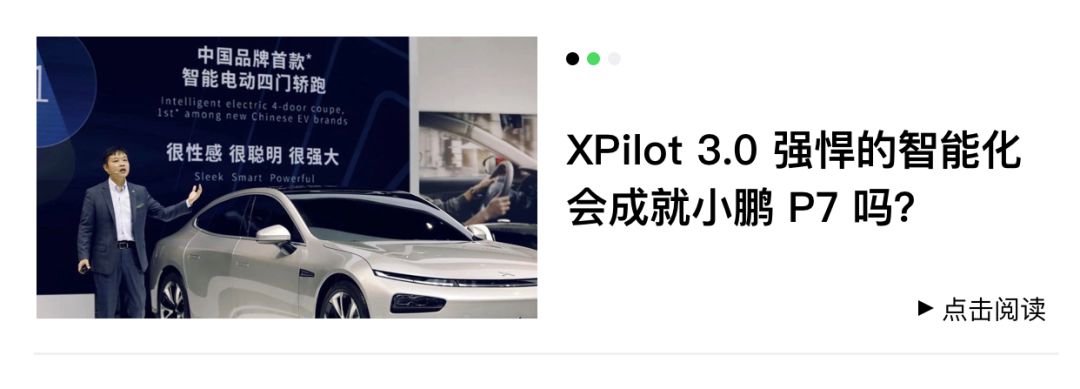On April 2nd, XPeng Motors announced that it will expand the G3 series by adding three new models, G3 460, G3 460i, and G3 520i, with a total of seven configurations available for official sale. Both G3 460 and G3 460i can achieve a NEDC comprehensive endurance range of 460 km.
Moreover, the G3 460i and G3 520i models will be equipped with XPeng’s brand-new intelligent network connection hardware and intelligent ecological system. This is believed to be the previously exposed Qualcomm 820A in-vehicle infotainment chipset hardware module.
According to the relevant news released by XPeng, the biggest highlight of this upgrade is not in terms of endurance, although endurance is also important. Another point that is critical for the old G3 owners is the upgrade of the “intelligent network connection hardware” and “system aspect.”
Why are these two upgrades good news for XPeng’s old customers and what impact will “hardware upgrade” have?

Two main upgrades for intelligence
According to the official news from XPeng, the brand-new intelligent network connection hardware of the G3 series mainly has two major improvements compared with the original model, namely, a brand-new intelligent large screen and Qualcomm 820A chipset, which is interesting.
According to the official introduction, the upgraded system will increase the computing power by 700%, improve fluidity by 30%, and enhance storage capacity by 33%. It can greatly improve the smoothness of the large screen operation, and the air conditioning and volume control can be operated more quickly. However, this still needs more practical tests to verify.
Compared with the original model, the brand-new intelligent network connection system also has changes, mainly including the same brand-new UI design as P7. This is also a vehicle-mounted system that has been deeply customized by XPeng based on the Android system. The main performance is that the interface operation is more concise and the dynamic effect is cooler. The entertainment function of the in-vehicle application market is also richer.

Mostly, these are system-level upgrades. XPeng also considers the intelligent needs of G3 owners and allows them to upgrade “hardware,” which includes two parts: the core component chip of the vehicle-mounted system and the large screen of the vehicle-mounted system.
Why is this good news for old users?
Improved Functionality through OTA Upgrade
It may seem similar to the OTA upgrade features of other vehicles, but let me clarify: this intelligent upgrade includes upgrades to both the “infotainment system” and the 820A hardware module in the drive system. Rather than just upgrading the system, the hardware chip in the vehicle must be replaced.
Now let’s explore why this is great news for existing customers. The infotainment system, also known as the vehicle’s entertainment platform, dominates the interaction between people and the vehicle, making a seamless experience critical.
With the increasing integration of infotainment features in electric vehicles, such as Tesla’s lacking physical components, the “usability” and flow of the infotainment system is heavily dependent on software system optimization and the in-vehicle entertainment chip.
As you may know, the chip in the XPENG is a Cortex-A7 chip from ARM with 2GB RAM and SGX544 graphics processor. Despite some benefits such as low power consumption and small size, the XPENG’s computing capabilities fall short when handling complex functionality upgrades, causing delays in tasks such as adjusting the air conditioning temperature.
However, the Qualcomm 820A processor, originally developed for mobile phones, has significantly improved performance for automotive use, built on the Snapdragon 820 architecture. It meets automotive industry standards for chipsets and is incredibly advanced in terms of connected cars, connectivity, and computing power.
With the ideal integration of this chip, the performance of the infotainment system is significantly enhanced. The LYNK& CO 05 will also be equipped with this chip, and Jaguar has used the 820A chip before. XPENG is the first in the 150,000 RMB model range to use this chip, making it a desirable upgrade for many existing XPENG owners who experienced application lag or other issues.
For new customers, this upgrade is included when purchasing the latest model, but the new upgrade program is also an excellent solution for existing customers who don’t want to change their entire car.
For XPENG, an internet-born company, this hardware upgrade is only a start. Naturally, system level optimization is expected to follow.# Smart Cars Could Gradually Become “Modular”
We briefly discussed the intelligent upgrade of Xpeng above. However, what we focus on is the importance of “hardware upgrades” rather than what it upgrades to because car companies cannot upgrade to a worse product. Typically, upgrades are done upward.
Let’s talk about smart cars. To simplify the complexity, the so-called automobile intelligence is not a single technology but the collective term for all intelligent technologies related to cars. The same goes for mobile phones: what used to be a device only for making phone calls, is now regarded as a smartphone with games, movies, and internet access. The comparability to cars is the same. Whether it is automatic driving, in-car entertainment, or better voice control – all are a reflection of intelligent technology.
The two most common words that consumers hear are probably “autonomous driving” and “in-car intelligent entertainment system”, which are the most significant areas where consumers can experience the intelligence of cars – one is the driving side, the other is the entertainment side. Here is why the importance of “hardware upgrades” is emphasized.
While intelligence cars and smartphones share similarities, they are different in terms of iteration speed, unit costs, and upgrade cycle. Smartphones can be replaced annually, but not intelligent cars, as they are not consumer products but advanced and secured devices. For example, chips developed for military defense have higher security standards than chips developed for automotive or industrial use. Therefore, the restrictions on development, development cycles, and costs for automotives are more stringent, making the upgrade of vehicles slower.
Here comes the question: the design lifespan of a car is usually 8-10 years long, but the car’s embedded chips can only be upgraded every 3-5 years. However, with the constant development of technologies, the vehicle’s functions become more diverse and sophisticated. Can a five-year-old car still get OTA updates? Will the use of car machines still be fast and smooth? This is where hardware-upgradability provides a new way of thinking. By improving chip performance, vehicle performance remains synchronized, while keeping the rest of the vehicle unchanged. This has taken the software OTA one step forward.
The possibility of “hardware upgrading”
As the interaction between the vehicle system and the underlying data of the entire vehicle becomes more frequent, customized designs and function optimization gradually become critical in the intelligent car machine. More importantly, the car machine is seamlessly integrated into the overall vehicle system architecture.The original retrofitting mode can no longer meet the requirements of intelligent in-vehicle hardware iteration:
In the past, replacing the central control screen of the vehicle was mainly considered as a category of car modification. This is mainly because the vehicle head unit is a relatively independent hardware unit. As long as the size is compatible, there will not be major issues when using products from different retrofit manufacturers. These products can even provide more functions compared to the original factory head unit.
However, as demands are changing, technology must evolve as well. The retrofit market can no longer satisfy safety and performance requirements. Traditional automobiles have a single entertainment function, and the entire vehicle control program is completed by ECU. As the functions of vehicles continue to increase, the distributed module of the ECU unit can no longer meet the needs. To put it simply, in the early days, the power was controlled by EUC. However, as functions like ACC and entertainment were added, each unit needed to be controlled by another ECU, and this is a distributed architecture.
With the development of automotive electronics, the number of in-vehicle sensors is increasing, and the corresponding relationship between each sensor and ECU reduces the overall quality of the vehicle. The complexity of the car’s circuits has also increased dramatically. At this point, stronger centralized architectures such as DCU (domain controller) and MDC (multi-domain controller) have gradually replaced distributed architectures.
The whole car is divided into several domains, such as powertrain, vehicle safety, body electronics, intelligent cabin, and intelligent driving. Multi-core CPU/GPU chips are used to centrally control each domain.
In the era of autonomous driving, controllers need to receive, analyze, and process a large and complex amount of signals. The original distributed computing architecture or single-domain controller with one ECU corresponding to one function can no longer meet these demands. Therefore, the concept of central processors emerged.
To put it simply, this is like a small company just starting. The boss manages the company alone and is responsible for sales, R&D, etc. (the boss is the ECU). As the company grows, there are 50 departments, and the boss needs to appoint department heads. However, each department works independently, and resources are not shared (each department head is a domain controller). As a new era arrives, such an architecture is no longer suitable, so a flat organizational structure emerges. The boss coordinates everything, and each department still has a head. But to achieve the goals of the company, all departments must cooperate (the boss is the central processor, and each department head cooperates with each other).
To sum up, in the era of intelligent vehicles, the requirements for vehicle algorithms and hardware adaptation are higher. Therefore, automakers will iterate and upgrade their products according to their own needs and incorporate redundant designs. Third parties cannot satisfy these requirements because autonomous driving algorithms, hardware, and head unit systems are no longer provided entirely by suppliers. Companies must develop these technologies independently.The products provided by aftermarket manufacturers are no longer comparable to factory in-car systems in terms of rich scenario functions and actual experience. In addition, there are reliability issues with non-standard grade products, potential electrical safety hazards involved in product modifications, and problems with manufacturers’ warranties. The iteration of vehicle-mounted system hardware has moved from the aftermarket to the OEM, becoming an inevitability.
Deeply Bind Existing Users
The era of incremental growth in the automotive market has come to an end, and the era of existing users has arrived. It is crucial to seize the existing user base. “Hardware upgrades” are the best solution, and how to achieve “an old car with a new experience” is the problem to be solved. First of all, the entire automobile is redundantly designed; that is, a solution for 3 or 5 years of use is already considered during development. Therefore, upward compatibility is not a problem.
No matter whether it is the surrounding power supply of the chip module or the modification of the underlying interface, it is no longer a technical problem. In 2019, NIO conducted an upgrade plan for the ES8’s central control large screen. After completion, the user’s car-mounted large screen will be upgraded from the existing 10.4-inch “edge screen” to the ES6’s 11.3-inch “narrow edge screen.”
Like XPeng Motors, the upgraded old products will be repurchased by the manufacturer and cashed in to offset the price of new products. Although NIO’s upgrade plan did not involve chip module upgrades, it set a good precedent for hardware upgradability.
Not only NIO, but Tesla is actually a veteran player in this regard. In addition to various important hardware that traditional automobiles have, there are two new hardware components responsible for processing traffic data and multimedia information respectively.
As new features become more and more abundant and data volume becomes larger, the computing power of many old models can no longer support the latest features. Therefore, every time Tesla releases a new OTA feature, old car owners can only look on enviously.
Tesla has promised multiple times that as long as you purchase full self-driving capability (commonly known as FSD, with a domestic price of 56,000 yuan), you can obtain the right to upgrade the self-driving chip for free. However, there is little mention of upgrading the hardware of the media center.Recently, Tesla CEO Musk interacted with netizens on Twitter and expressed that MCU upgrade service is likely to be introduced in the next few months, but he believed that spending $2,000 to enhance entertainment function is not worth it.
So not only can the entertainment chip be replaced, but the autonomous driving chip module can also be replaced. The true intelligence of smart cars lies in achieving cross-product level transformation.
In fact, here we need to mention that XPeng’s replacement is from the ARM platform to the Qualcomm platform, so there should be many changes internally. First, it should be the change of the chip module rather than the isolated chip, and then the power supply and software adaptation should be carried out after the change.
The current news is that 820A is in charge of entertainment and it is uncertain whether it will involve the driving level.
However, according to XPeng’s related personnel, the price of hardware and system upgrade is 10,000 yuan, and the old parts can be deducted to 6,999 yuan. I think it is worth it because it is not just a simple replacement of the screen, but even the chip level has been replaced, at least 820A is currently recognized as the strongest.
In conclusion
We believe that hardware upgrade will be the trend of future intelligent car development, but we need to pay attention to a detail: whether it can be as simple as repairing cars for future replacement. Only when “hardware upgrade” can become a mass-level product, it can be achieved. However, from the practices of NIO, Tesla, and XPeng, this goal is being worked on.
XPeng’s replacement of chips this time is actually cross-platform. I personally encourage old users to upgrade because vehicle experience is really important, because even if there may be hardware upgrades in the future, it may not involve chips, and even if it involves chips, it may still be the upward upgrade of Qualcomm platform products.
After a year of promotion, the price is reasonable at 3,999 yuan, but whether or not users will buy it still depends on the market’s response.
“Hardware upgrade” solves two important problems. One is the shortcoming of insufficient vehicle hardware capability after frequent OTA updates; the other is to keep the product competitive at all times. In the new business environment, it is not about selling products to 100 people, but about selling 100 products to one person.
Authored by De Lu, Edited by Da Ji.


This article is a translation by ChatGPT of a Chinese report from 42HOW. If you have any questions about it, please email bd@42how.com.



